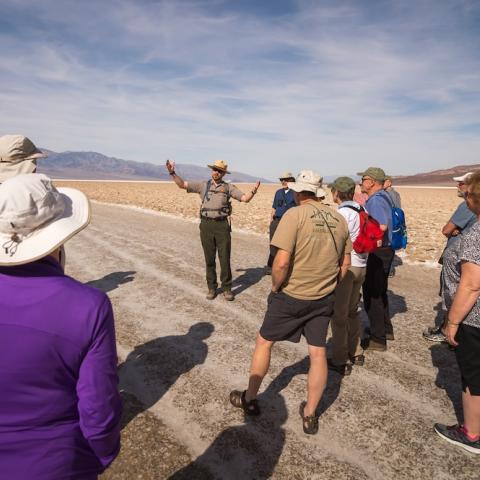
Wild burros in Death Valley National Park will be rounded up by a Texas organization/Mark Meyers via NPS
Burros set free by long-ago prospectors who failed to strike it rich in the landscape now known as Death Valley National Park have steadily increased in number. Today there are an estimated 2,000 of these non-native animals in the park. Within five years, that number could be virtually wiped out under an agreement the park has reached with a Texas organization.
The park has entered into a five-year agreement with Peaceful Valley Donkey Rescue to capture up to 2,500 burros from Death Valley and relocate them to offsite adoption facilities and sanctuaries.
“Burros are not part of the natural California desert ecosystem,” said Mike Reynolds, the park's superintendent. “They damage springs and vegetation. They compete for food and water with native animals, such as desert bighorn sheep. In addition, they are a safety hazard to visitors on park roadways. With this partnership, we have created a win-win situation for the burros, the park, and taxpayers.”
Relocations will be done through a public-private partnership with minimal cost to the government, a park release said. Peaceful Valley’s burro project at Death Valley National Park is entirely funded by private donations, foundation grants, and corporate sponsorships.
Mark Meyers, executive director of Peaceful Valley Donkey Rescue, said his group's objective "is to protect our wild burros. If they must be removed, we want to ensure that it is done safely with as little stress possible."
Peaceful Valley will use humane methods to capture burros. One method is to bait burros into a temporary pen with water or food. Wranglers on horseback may also drive the animals into temporary corrals.
Peaceful Valley then plans to transport burros to temporary holding facilities before transferring them to a training facility. Trainers will work to prepare the burros for adoption.
Park Service officials expect the relocation effort to begin this month.
Wild burros are present in many areas of the Mojave Desert. Peaceful Valley Donkey Rescue also has plans to relocate burros from Fort Irwin National Training Center and Mojave National Preserve.
Unlike the Bureau of Land Management and U.S. Forest Service, the National Park Service is not directed by the Wild Free Roaming Horse and Burro Act of 1972 to maintain a population of burros. Death Valley National Park’s 2002 General Management Plan, which went through extensive public review, calls for removing all burros from the park to protect water quality, riparian ecosystems, native plants, and native animals.
Burro populations have increased greatly in recent years. The last burro roundup in Death Valley National Park was in 2005.




 Support Essential Coverage of Essential Places
Support Essential Coverage of Essential Places







Add comment